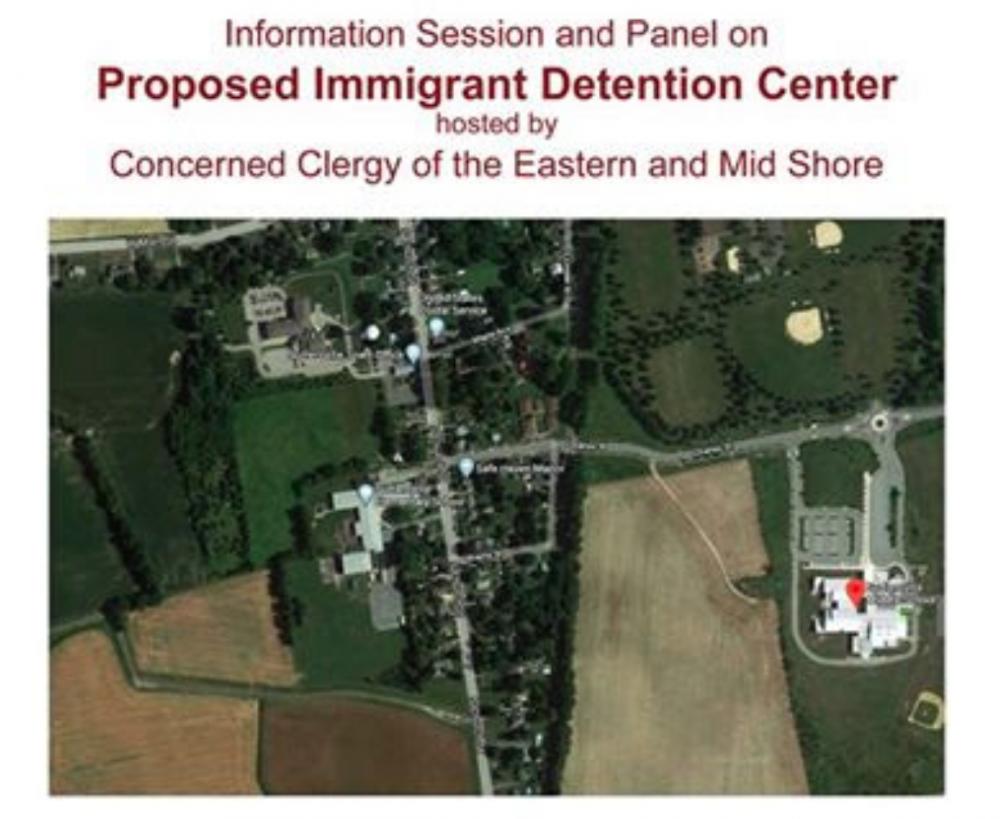Concerned clergy will hold an informational session Saturday afternoon in Sudlersville on the community impact of immigrant detention centers.
Sudlersville is considering a change to its zoning ordinance that would allow private entities to operate civil detention centers as a permitted or conditional use in the town.
The town had been in discussions with Immigration Centers of America, which operates a facility in Farmville, Va., but the firm suspended talks due to concerns about federal funding.
The Sudlersville town commissioners amended Ordinance 2019-05 in early January and voted earlier this month to send the amended ordinance to the town planning commission for review. The planning commission is expected to review the proposal at its March meeting with a town public hearing on the legislation not likely until May.
The information session and panel will be held from 3-5 p.m. Saturday, Feb. 29, at Calvary-Asbury United Methodist Church, 105 N. Church St., Sudlersville.
Discussion topics will include the community impact of detention centers, the realities of detention and the greater meaning and implications of detention.
According to a flyer announcing the information session, “the town of Sudlersville is proposing to move forward with a zoning ordinance change that would clear the way for a private immigrant detention center to be built on land behind a local school. This session would address details about the potential impacts this will have on Sudlersville.”
A question-and-answer session will follow the discussion.
As the town process to amend its zoning ordinance to allow private detention centers continues, state lawmakers are weighing legislation that would prohibit “the State or any local jurisdiction from entering into an agreement relating to the establishment of an immigration detention facility owned or operated by a private entity,” according to an analysis of Senate Bill 850. “The bill prohibits the State or any local jurisdiction from approving a zoning variance or permit for the construction or reuse of buildings that will be used by private entities as an immigration detention facility without first notifying the public and holding public meetings for comment. The bill also prohibits the State or any local jurisdiction from entering into or renewing an immigration detention agreement.”
Three counties currently have federal immigration detention agreements that generate a total $9.1 million in payments, according to the fiscal and policy note from the Department of Legislative Services. Worcester County received about $5.2 million in federal payments in fiscal 2020, which accounted for 54 percent of the county’s total detention center costs.
The Senate bill was considered Feb. 26 in the Judicial Proceedings Committee; the cross-filed House bill (HB 677) was heard a day earlier in the Judiciary Committee.



Janice Dickson says
Poor, poor Sudlersville.
Something has to open and stay open,
and maybe a federally funded detention center will do it
Dean Snyder says
Hi. I don’t get this sentence: “Worcester County received about $5.2 million in federal payments in fiscal 2020, which accounted for 54 percent of the county’s total detention center costs.”
This was federal payments for a federal detention center, right? Did it cover 54 percent of that detention center’s costs? Who picked up the 46 per cent?
Or does it mean it paid for itself and covered 54 percent of another county detention center’s costs?
I’m just trying to figure out the financial implications of having a federal detention center in the county. Thanks.
Earl Runde says
Correctional Facilities operated by private corporations, not governmental bodies, are for-profit institutions. Some of the ways these corporations make a profit are by providing less training to staff, lower levels of staffing, lower levels of medical care, smaller food budgets and less spending on facility maintenance compared to governmental facilities. Citizens considering whether to support Immigration Centers of America’s plan could consider evaluating this company’s record on these and related issues as a way to evaluate the potential safety for inmates and employees.